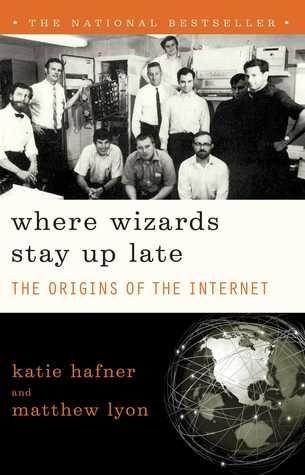
Where Wizards Stay Up Late: The Origins of the Internet
by
Katie Hafner
and
Matthew Lyon
Published 1 Jan 1996
Chapter Four The description of the building of the Interface Message Processor was based on interviews with Dave Walden, Ben Barker, Severo Ornstein, Bob Kahn, Frank Heart, Alex McKenzie, and Will Crowther. We also relied on ARPA’s request for proposals and on BBN’s proposal. Chapter Five The description of UCLA’s preparations for and receipt of the IMP Number One is based on interviews with Len Kleinrock, Steve Crocker, Mike Wingfield, andVint Cerf. The description of the Network Working Group’s early work in layered protocols was based on interviews with Steve Crocker, Jon Postel, andVint Cerf. The description of the first log-in session between UCLA and SRI was based on interviews with Len Kleinrock and Charley Kline. The description of the gridlock tests conducted in early 1970 was based on interviews with Bob Kahn, Dave Walden, andVint Cerf.
…
While Barker and Ornstein were reasonably certain that the problem was fixed, they had no way of knowing for sure unless the machine ran for a few consecutive days without crashing. And they didn’t have a few days. Heart had already approved shipping the first Interface Message Processor to California the next day. IMP Number One was almost out the door. 5 Do It to It Truett Steve Crocker and Vint Cerf had been best friends since attending Van Nuys High School in L.A.’s San Fernando Valley. They shared a love for science, and the two spent more than a few Saturday nights building three-dimensional chess games or trying to re-create Edwin Land’s experiments with color perception.
…
Both of Vint’s younger brothers played football and took turns as president of the student body.Vint was the bookworm. His literary tastes tilted toward fantasy. Well into his adult life, he regularly set aside several days to reread The Lord of the Rings trilogy.Vint did particularly well in chemistry, but his passion was math. When Steve Crocker started the math club atVan Nuys High,Vint was one of the first to join. As a result of premature birth, Vint was hearing-impaired. Although hearing aids in both ears later corrected much of the deficit, he grew up devising clever strategies for communicating in the hearing world. Years later, after they became friends, Bob Kahn brought some of Cerf’s aural tricks to his friends’attention and Cerf eventually wrote a paper called “Confessions of a Hearing-Impaired Engineer,” in which he shared some of his secrets.

The System: Who Owns the Internet, and How It Owns Us
by
James Ball
Published 19 Aug 2020
While it might not look good, that was the network working as intended – in theory, at least. After around an hour of hasty recoding, the researchers were ready to try again, and this time the full ‘login’ message was sent. The internet was off to a start, even if it was an awkward one. ONE OF THE men in the room at that very first test of the internet was Steve Crocker. I meet him, now a sprightly man in his seventies with close-cropped grey hair, in Bethesda, a small town in south Maryland, not far from Washington DC. He elects to meet in La Madeleine, a chain ‘French bistro’ down the road from the offices of Shinkuro, his online research and development company.
…
Instead, like a construction kit, they were building a foundation that could be built upon, or altered: an open network. Another consequence came about essentially because of bids to avoid fights: if no one is in charge and everyone has different ideas, how do you document what you’re doing and why, or set your standards? You certainly can’t just proclaim a new rule without provoking a backlash. It was Steve Crocker who hit on a solution – the main reason for his inclusion in the Hall of Fame. And it’s not a revolutionary piece of code. It’s not code at all. It’s a piece of office politics. ‘We were just graduate students,’ he said in his speech to the Internet Hall of Fame.8 ‘Nobody put us in charge. We had no authority.
…
One that has caught on, and which makes sense once you know the confusing truth, is that the internet was conceived as part of a bid to create a communications network that could survive a nuclear war. While that doesn’t seem to have been the case, it’s clear where the confusion could have come from. It is, however, a story Steve Crocker – one of very few people to have seen ARPANET as both a university researcher and an ARPA staffer, working under Lukasik – finds easy to dismiss: he once talked the US military into taking the whole network out by accident. It couldn’t survive his bright idea, let alone a nuclear strike. Shortly after joining DARPA, he visited an air-force base and gave them advice on testing how much throughput the network had: they could try sending one message through lots of links at a time, ‘like a Gatling gun’.
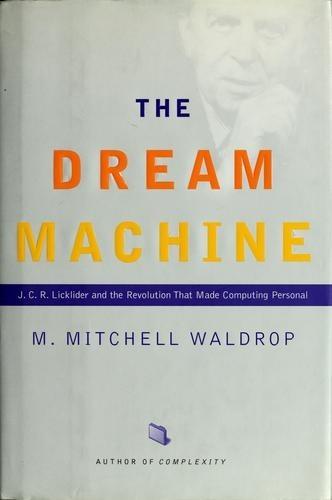
The Dream Machine: J.C.R. Licklider and the Revolution That Made Computing Personal
by
M. Mitchell Waldrop
Published 14 Apr 2001
"Although he was extremely well motivated," says Steve Crocker, "it showed through: he just didn't seem to have the energy anymore." Happily, though, that was one problem Lick's boss could solve. Reaching down into ARPA's nuclear-monitoring research office, Lukasik brought up an army colonel named David Russell to serve as Lick's deputy. The mild-mannered but very capable Colonel Russell soon had everything quietly under control. And Lick, now blessedly freed of doing any but the highest-level paperwork, was able to do what he did best, which was set the tone and direction of the office. Of course, notes Steve Crocker, to people who were used to the hyperener- getic, do-it-all-myself style of Larry Roberts, their new office director looked sus- piciously like a figurehead-honored, respected, and listened to, to be sure, but not really in charge.
…
And the master-of-ceremonies role had fallen to the twenty-four-year-old Barry Wessler, an electrical-engineering student who had come down from MIT in the fall of 1967 to serve as Taylor and Roberts's assistant in IPTO. ("I said I wouldn't go [to Allerton] because I was over thirty!" jokes Taylor, who was then an old man of thirty-six.) The grad-student conference started in July 1968, with no one knowing quite what to expect. "It turned out to be a really amazing group of people," recalls Steve Crocker, who was just in the process of returning to UCLA after eighteen months in Minsky's AI Lab. "It was probably the smartest, most intense group of young computer scientists who had ever gotten together up until that time. We just cooked for about three days. We sized each other up. We got to know who was working on what.
…
Indeed, by all accounts, it was there in the cornfields of Illinois that the young hotshots of this rising generation first began to feel that they were part of something larger than merely this or that research group. They were part of a na- tionwide community-the ARPA community. Certainly the twenty-three-year- old Steve Crocker thought so. Before that meeting, he says, "I had been keeping track of where I thought the hot research was: BBN, MIT, CMU, Stanford-I had my tastes and biases, and I thought I knew it all. But then I walked into this room, and I was struck very forcefully that there was a nearly hundred-percent match between where I thought the good work was being done and the people and the places represented-which meant that somebody else had figured this out, too.

Protocol: how control exists after decentralization
by
Alexander R. Galloway
Published 1 Apr 2004
Friend and collaborator Eugene Thacker graciously agreed to write the foreword. Rachel Greene coauthored several texts with me in 1998, scraps of which reappear, however transformed, in various parts of chapter 7. The following people agreed to be interviewed by me: Bernard Aboba, Fred Baker, Bob Braden, Vinton Cerf, Steve Crocker, Stacy Leistner (ANSI), Tony Rutkowski, and Stefaan Verhulst. Kristen DelGrosso provided invaluable research assistance for portions of this book. I would also like to thank Doug Sery at the MIT Press and series editor Joel Slayton for their support and assistance. I thank my family for their love and support, especially my brother Munro Galloway, who has, over the years, generally been first to introduce me to the more interesting areas of culture.
…
This international consortium was created in October 1994 to develop common protocols such as Hypertext Markup Language (HTML) and Cascading Style Sheets. Scores of other protocols have been created for a variety of other purposes by many 8. The expression derives from a memorandum titled “Host Software” sent by Steve Crocker on April 7, 1969, which is known today as RFC 1. 9. Pete Loshin, Big Book of FYI RFCs (San Francisco: Morgan Kaufmann, 2000), p. xiv. 10. “Internet Society Mission Statement,” available online at http://www.isoc.org/isoc/ mission/. Introduction 6 different professional societies and organizations.
…
But, to be sure, because of the technical sophistication needed to participate, this loose consortium of decision makers tends to fall into a relatively homogenous social class: highly educated, altruistic, liberal-minded science professionals from modernized societies around the globe. And sometimes not so far around the globe. Of the twenty-five or so original protocol pioneers, three of them—Vint Cerf, Jon Postel, and Steve Crocker—all came from a single high school in Los Angeles’s San Fernando Valley.6 Furthermore, during his long tenure as RFC editor, Postel was the single gatekeeper through whom all protocol RFCs passed before they could be published. Internet historians Katie Hafner and Matthew Lyon describe 5. Jake Feinler, “30 Years of RFCs,” RFC 2555, April 7, 1999. 6.
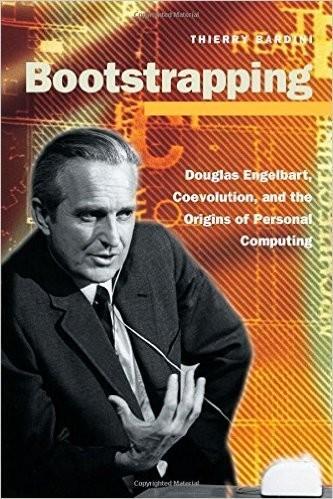
Bootstrapping: Douglas Engelbart, Coevolution, and the Origins of Personal Computing (Writing Science)
by
Thierry Bardini
Published 1 Dec 2000
In fact, Roberts organized the network implementation around three different teams with various contracts and links between them: the NWG itself; 6 Leonard Kleinrock and his team of graduate students (in- cluding Steve Crocker, Vint Cerf, and Jon Postel) at UCLA, which was to be- ARPANET, E-matl, and est 185 come the Network Measurement Center (NMC); and finally, Douglas Engel- bart and his staff, which was to become the Network Information Center (NIC). Early in the history of the NWG, Elmer Shapiro insisted that "the work of the group should be fully documented." Steve Crocker, one of the members of Kleinrock's team of graduate students, volunteered to write the first meeting note, which he labeled "Request For Comments" in order "to avoid sounding too declarative," according to Hafner and Lyon (1996, 144).
…
At the time of the wrIting of RFC 3, accordIng to Crocker, the Network Working Group "seemed to consist" of Steve Carr (Utah), Jeff Rulifson and Bill Duvall (SRI), and Steve Crocker and Gerard Deloche (UCLA). The distribution list of the RFCs also Included Bob Kahn (BBN), Larry Roberts (ARPA), and Ron Stoughton (UCSB). At the end of July 1969, the constitution of the NWG had changed slIghtly. It con- sisted then of Steve Carr (Utah), Elmer Shapiro and Bill English (SRI), Steve Crocker (UCLA), John Heafner (RAND), and Paul Rovner and Jim Curry (Lincoln Labs). The distribution list of the RFCs also included Ron Stoughton (UCSB), Bob Kahn (BBN), Larry Roberts (ARPA), and Jerry Cole (SDC).
…
During the initial ARPA NWG meeting at SRI in October 1968, the group, "already in agreement about the underlying notions of a DEL-like approach, set down some terminology, expectations for DEL programs, and lists of proposed semantic capability." A second round of meetings was later held in a piecemeal way: Crocker meet with Rulifson at SRI on November 18, 1968, and Stoughton meet with Rulifson at SRI on December 12, 1968 (Rulifson, RFC 0005, 1969). Steve Crocker gave an account of these meetings ("The Origins of RFCs") in RFC 1000 ("The Re- quest for Comments Reference Guide" by Jon Postel, August 1987): The first few meetings were quite tenuous. We had no official charter. Most of us were graduate students and we expected that a professional crew would show up eventually to take over the problems we were dealing with.

The Innovators: How a Group of Inventors, Hackers, Geniuses and Geeks Created the Digital Revolution
by
Walter Isaacson
Published 6 Oct 2014
Pelkey, “A History of Computer Communications,” http://www.historyofcomputercommunications.info/index.html, 2.9; Hafner and Lyon, Where Wizards Stay Up Late, 1528. 95. The tale of Steve Crocker’s RFCs has been told in many variations. This account comes from my interviews with Steve Crocker, Vint Cerf, Leonard Kleinrock; Hafner and Lyon, Where Wizards Stay Up Late, 2192 and passim; Abbate, Inventing the Internet, 1330 and passim; Stephen Crocker oral history, conducted by Judy E. O’Neill, Oct. 24, 1991, Charles Babbage Institute, University of Minnesota; Stephen Crocker, “How the Internet Got Its Rules,” New York Times, Apr. 6, 2009; Cade Metz, “Meet the Man Who Invented the Instructions for the Internet,” Wired, May 18, 2012; Steve Crocker, “The Origins of RFCs,” in “The Request for Comments Guide,” RFC 1000, Aug. 1987, http://www.rfc-editor.org/rfc/rfc1000.txt; Steve Crocker, “The First Pebble: Publication of RFC 1,” RFC 2555, Apr. 7, 1999. 96.
…
O’Neill, Oct. 24, 1991, Charles Babbage Institute, University of Minnesota; Stephen Crocker, “How the Internet Got Its Rules,” New York Times, Apr. 6, 2009; Cade Metz, “Meet the Man Who Invented the Instructions for the Internet,” Wired, May 18, 2012; Steve Crocker, “The Origins of RFCs,” in “The Request for Comments Guide,” RFC 1000, Aug. 1987, http://www.rfc-editor.org/rfc/rfc1000.txt; Steve Crocker, “The First Pebble: Publication of RFC 1,” RFC 2555, Apr. 7, 1999. 96. Author’s interview with Steve Crocker. 97. Crocker, “How the Internet Got Its Rules.” 98. Stephen Crocker, “Host Software,” RFC 1, Apr. 7, 1969, http://tools.ietf.org/html/rfc1. 99. Crocker, “How the Internet Got Its Rules.” 100. Vint Cerf, “The Great Conversation,” RFC 2555, Apr. 7, 1999, http://www.rfc-editor.org/rfc/rfc2555.txt. 101. “The IMP Log: October 1969 to April 1970,” Kleinrock Center for Internet Studies, UCLA, http://internethistory.ucla.edu/the-imp-log-october-1969-to-april-1970/; Segaller, Nerds, 92; Hafner and Lyon, Where Wizards Stay Up Late, 2336. 102.
…
Having worked on the ARPANET and then PRNET, he made it his mission to create a method to connect them and other packet networks, a system that he and his colleagues began calling an “internetwork.” After a while, that word got shortened a bit, to “internet.” To be his partner in this endeavor, Kahn tapped Vint Cerf, who had been Steve Crocker’s sidekick on the group writing Requests for Comments and figuring out the protocols of the ARPANET. Cerf was raised in Los Angeles, where his father worked for a company that made engines for the Apollo space program. Like Gordon Moore, he grew up playing with a chemistry set in the days when they were delightfully dangerous.
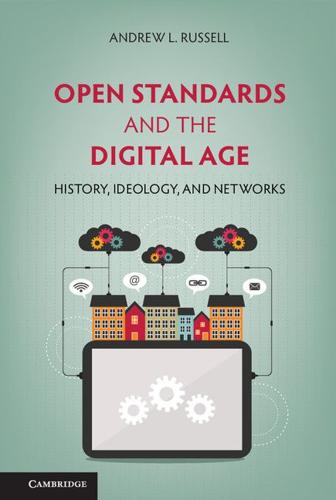
Open Standards and the Digital Age: History, Ideology, and Networks (Cambridge Studies in the Emergence of Global Enterprise)
by
Andrew L. Russell
Published 27 Apr 2014
It was clear from the start of the Arpanet in 1969 that a digital, packet-switched communications system would require new institutions to coordinate the informal and geographically dispersed community of researchers who were building it. Several ARPA researchers began to meet regularly and named themselves the Network Working Group (NWG). At first, the NWG was led by Steve Crocker, a graduate student at UCLA, and consisted mostly of graduate students at other ARPA-funded computer research projects at UCLA, the University of California at Santa Barbara, the University of Utah, and MIT. The group also included representatives from ARPA contractors in Bolt, Beranek and Newman (BBN); RAND; and the Stanford Research Institute.
…
Their objectives, articulated in the notes of their first meeting on October 24, 1972, include commitments to collaboration such as “select a design philosophy,” “design the Host-Host protocol,” and, most ambitiously, “agree to implement the protocol design by a certain date.”26 Both subgroups acknowledged they would have to frame their technical work in a way that could inform the ongoing efforts of the “official protocol designers” that Steve Crocker anticipated when he created the Arpanet Request for Comments series in 1969. Their desire to design protocols that would connect private and public networks – that is, telecommunication networks that, in most countries, were operated by national monopolies – represented a major departure from the NWG’s interest in protocols for one private network, the Arpanet.27 Private and experimental networks could afford to develop standards informally, but formal standards for public and international networks fell under the jurisdiction of the International Telecommunications Union (ITU).
…
Since no other INWG members had advanced any proposals, the long-awaited vote was simply an up-or-down referendum on the “synthesis” that Cerf, McKenzie, Scantlebury, and Zimmermann created back in July.74 The results of the vote, distributed to INWG in March 1976, were 25.8 in favor, 7.5 against, and 8.7 abstentions.75 The split within the group indicates the diverging strategic agendas of INWG participants. Support for INWG 96 included Pouzin and Zimmermann from Cyclades, Cerf from Stanford, McKenzie from BBN, Scantelbury from NPL, and Steve Crocker from the University of Southern California. Notable votes against were cast by Rémi Déspres, the representative of the French PTT who was drafting the X.25 proposal in CCITT; Jon Postel, the ARPA-funded researcher at the Stanford Research Institute; and Jerry Burchfiel and Ray Tomlinson, two researchers at BBN who were working on an ARPA contract for packet radio networks.
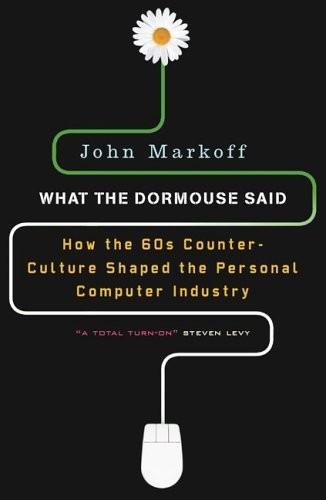
What the Dormouse Said: How the Sixties Counterculture Shaped the Personal Computer Industry
by
John Markoff
Published 1 Jan 2005
Eventually, it would expand to satisfy Bob Taylor’s concept of a single network that would permit information sharing and remote computing among a diverse community of computer users. Meetings had begun the previous summer between representatives from the four initial sites, and they continued into the fall. After the March 1969 meeting, Steve Crocker, a member of the UCLA group, had drawn up a preliminary set of notes he referred to as “Request for Comments 1.” Such RFCs would become a rich Internet tradition and a simple and efficient way to produce technical standards for the network. The first RFC was based on the group’s discussions and outlined a set of understandings about how the host computers at the four sites would communicate through intermediate data processors known as IMPs, which had been developed for the new network at Bolt, Beranek and Newman in Cambridge.
…
On January 24, 1972, the day before the invitation to the first PODAC meetings went out, Watson entered his assessment of ARC’s relations with its largest backers into the Augment journal: On Jan 6 72 I had my first chance to check out my hypothesis about relations with ARPA when Doug invited me down to be around when Larry Roberts visited ARC with Steve Crocker. The visit frankly stunned me. The communication between ARC and ARPA about goals was nonexistent. Larry communicated clearly his displeasure with where he thought ARC was at…. In all my five years of selling research and development and interfacing with buyers of various kinds, I had never been in such a tense session; further my experience indicated that unless such a relationship could be reversed it was just a matter of time until funding was cut.15 It was clear to Watson that Engelbart simply viewed ARPA as a source of financing for his larger Augmentation scheme, while Roberts wanted a functioning service organization for his new network.
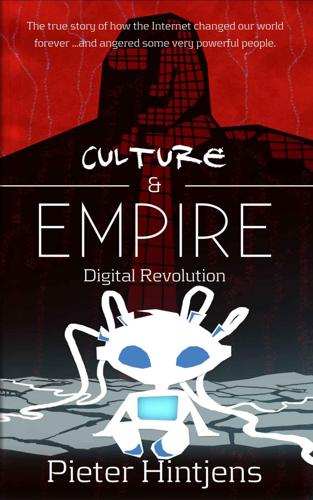
Culture & Empire: Digital Revolution
by
Pieter Hintjens
Published 11 Mar 2013
The document, simply called "RFC001", says: During the summer of 1968, representatives from the initial four sites met several times to discuss the HOST software and initial experiments on the network. There emerged from these meetings a working group of three, Steve Carr from Utah, Jeff Rulifson from SRI, and Steve Crocker of UCLA, who met during the fall and winter. The most recent meeting was in the last week of March in Utah. Also present was Bill Duvall of SRI who has recently started working with Jeff Rulifson. Crocker, Carr, and Rulifson are not household names. Steve Crocker and his team invented the Requests for Comments, or RFC series. These documents became the laws of the Internet, specifying every standard in a clear form that was freely usable by all.

Tubes: A Journey to the Center of the Internet
by
Andrew Blum
Published 28 May 2012
“It happens, it’s sort of periodic, when you get this kind of golden era.” Indeed, the group assembled in his lab that fall formed a core group of Internet hall of famers, notably Vint Cerf (now “Chief Internet Evangelist” at Google), who cowrote the Internet’s most important operational code—what is known as the TCP/IP protocol—with Steve Crocker, also Kleinrock’s student, and Jon Postel, who managed the Internet Assigned Numbers Authority for years and was a key mentor to an entire generation of network engineers. The museum would be built in room 3420, where the IMP had been installed from Labor Day 1969 until it was decommissioned in 1982.
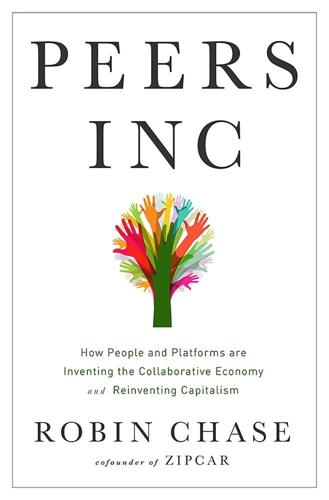
Peers Inc: How People and Platforms Are Inventing the Collaborative Economy and Reinventing Capitalism
by
Robin Chase
Published 14 May 2015
Most government contracts come with long lives: three-, five-, ten-, and even ninety-nine-year terms (to an Australian and Spanish consortium to operate and maintain the Chicago Skyway in exchange for keeping all the toll revenue). Why bother to innovate during the first seven years of a ten-year contract? Steve Crocker, one of the Internet’s founding fathers, wrote a really wonderful piece for the New York Times that describes how the Internet’s open standards were able to evolve over time. As he told me, “We had no idea when we started [forty years ago] that this is where we’d end up.” Of course, who among us can predict the future?
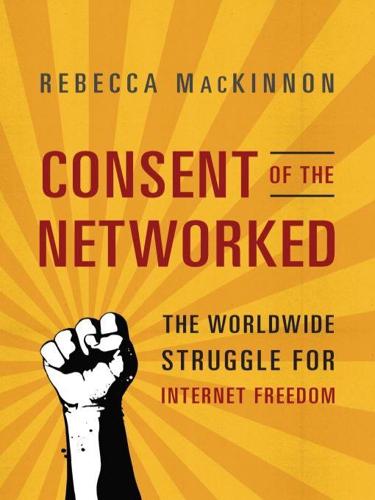
Consent of the Networked: The Worldwide Struggle for Internet Freedom
by
Rebecca MacKinnon
Published 31 Jan 2012
Two years earlier, the New York Times had nicknamed her “the decider”: Jeffrey Rosen, “Google’s Gatekeepers,” New York Times Magazine, November 28, 2008, www.nytimes.com/2008/11/30/magazine/30google-t.html (accessed June 27, 2011). 101 In a January 2010 op-ed in the New York Times: Bono, “Ten for the Next Ten,” New York Times, January 2, 2010, www.nytimes.com/2010/01/03/opinion/03bono.html (accessed June 27, 2011). 101 exactly what Foreign Ministry spokesperson Jiang Yu said: “Chinese Government’s Management of Internet Is Sovereign Act, Says FM,” Xinhua News Agency, May 19, 2011, http://news.xinhuanet.com/english2010/china/2011-05/19/c_13883854.htm (accessed June 27, 2011). 102 Preventing Real Online Threats to Economic Creativity and Theft of Intellectual Property Act of 2011, otherwise known by its acronym, PROTECT IP: For the legislation’s full text and status, see www.govtrack.us/congress/bill.xpd?bill=s112-968. 102 degrade “the Internet’s value as a single, unified, global communications network”: Steve Crocker, David Dagon, Dan Kaminsky, Danny McPherson, and Paul Vixie, “Security and Other Technical Concerns Raised by the DNS Filtering Requirements in the PROTECT IP Bill,” May 2011, www.redbarn.org/files_redbarn/PROTECT-IP-Technical-Whitepaper-Final.pdf. 102 Civil liberties and free speech groups argued that the bill lacked safeguards: See, for example, Declan McCullagh, “Senate Bill Amounts to Death Penalty for Web Sites,” CNet News, May 12, 2011, http://news.cnet.com/8301-31921_3-20062398-281.html; and David Sohn, “Copyright Bill Advances, but Draws Plenty of Criticism,” Center for Democracy and Technology blog, May 26, 2011, www.cdt.org/blogs/david-sohn/copyright-bill-advances-draws-plenty-criticism. 102 “If protecting intellectual property is important, so is protecting the Internet from overzealous enforcement”: “Internet Piracy and How to Stop It,” New York Times, June 8, 2011, www.nytimes.com/2011/06/09/opinion/09thu1.html (accessed August 8, 2011). 102 In November 2010 the US Department of Homeland Security’s Immigration and Customs Enforcement unit (known as ICE) shut down eighty-two websites: Ben Sisario, “Music Web Sites Dispute Legality of Their Closing,” New York Times, December 19, 2010, www.nytimes.com/2010/12/20/business/media/20music.html (accessed June 27, 2011). 103 “Takedown Hall of Shame”: See www.eff.org/takedowns. 104 Ars Technica found its popular Facebook page shut down in May 2011 as the result of a DMCA complaint: Ken Fisher, “Facebook Shoots First, Ignores Questions Later; Account Lock-Out Attack Works (Update X),” Ars Technica , April 28, 2011, http://arstechnica.com/business/news/2011/04/facebook-shoots-first-ignores-questions-later-account-lock-out-attack-works.ars; and Jacqui Cheng, “Facebook Takedown Followup: What Happened, and What Facebook Needs to Fix,” Ars Technica, April 29, 2011, http://arstechnica.com/tech-policy/news/2011/04/facebook-takedown-followup-what-happened-and-what-facebook-needs-to-fix.ars (both accessed June 27, 2011). 105 Chinese authorities routinely combine intellectual property enforcement campaigns with broader efforts to stamp out not only pornography but also antigovernment material: Andrew Mertha, The Politics of Piracy: Intellectual Property in Contemporary China (New York: Cornell University Press, 2005), 134–144. 105 authorities viewed American pressure to tighten intellectual property enforcement and improve copyright law as politically convenient: Stephen McIntyre, “The Yang Obeys, but the Yin Ignores: Copyright Law and Speech Suppression in the People’s Republic of China,” UCLA Pacific Basin Law Journal, 2011, http://ssrn.com/abstract=1752443. 106 US trade policies pushing for tougher enforcement have been blind: For more specifics see Tome Broud, “It’s Easily Done: The China-Intellectual Property Rights Enforcement Dispute and the Freedom of Expression,” World Journal of Intellectual Property 13, no. 5 (September 2010): 660–673. 106 ACTA’s Internet section: For links to various leaked drafts as well as the text as officially released in April 2010, see Gwen Hinze, “Preliminary Analysis of the Officially Released ACTA Text,” EFF Deeplinks Blog, April 22, 2010, www.eff.org/deeplinks/2010/04/eff-analysis-officially-released-acta-text (accessed June 27, 2011). 106 WikiLeaks obtained a leaked copy and published it online: See Grant Gross, “EFF, Public Knowledge Sue US Gov’t over Secret IP Pact,” InfoWorld, September 18, 2008, www.infoworld.com/d/security-central/eff-public-knowledge-sue-us-govt-over-secret-ip-pact-955 (accessed June 27, 2011). 107 report by the Social Science Research Council examining the impact of US intellectual property enforcement trade policies: Joe Karaganis, ed., “Media Piracy in Emerging Economies,” Social Science Research Council, March 2011, http://piracy.ssrc.org. 107 In September 2010, the New York Times broke the story that Russian security services had carried out dozens of raids: See Clifford J.

The Future of Ideas: The Fate of the Commons in a Connected World
by
Lawrence Lessig
Published 14 Jul 2001
Something called “RFC 1958,” published in 1996, is perhaps the best formal effort. The Internet was built upon “re-quests for comments,” or RFCs. Researchers—essentially grad students—charged with the task of developing the protocols that would eventually build the Internet developed these protocols through these humble requests for comments. RFC 1 was written by Steve Crocker and outlined an understanding about the protocols for host (“IMP") software. Some RFCs specify particular Internet protocols; some wax philosophical. RFC 1958 is clearly in the latter camp—an “informational” document about the “Architectural Principles of the Internet.”35 According to RFC 1958, though “[m]any members of the Internet community would argue that there is no architecture,” this document reports that “the community” generally “believes” this about the Internet: “that the goal is connectivity, the tool is the Internet protocol and the intelligence is end-to-end rather than hidden in the network.”36 “The network's job is to transmit datagrams as efficiently and flexibly as possible.

Dealers of Lightning
by
Michael A. Hiltzik
Published 27 Apr 2000
If Metcalfe could not come up with something to fill the blank, the matter would be taken out of his hands—which would be not only a challenge to his intellectual authority as the network guy, but a blow to his pride. That dismal outcome was averted when he suddenly recalled a concept he had first encountered months earlier. Back in June, while visiting Washington on ARPANET business, he had lodged on the guest room sofa-bed of his friend Steve Crocker, an ARPA program manager. Late that night he pulled down from a handy bookshelf a heavy volume of papers from an obscure technical conference, “a sure cure for jet-lag sleeplessness,” and lumbered his way through one written by a University of Hawaii professor named Norman Abramson. Abramson’s paper described ALOHAnet, a radio network designed to allow computers to communicate with one another along the Hawaiian archipelago.
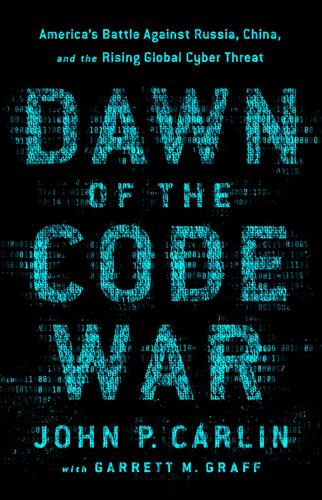
Dawn of the Code War: America's Battle Against Russia, China, and the Rising Global Cyber Threat
by
John P. Carlin
and
Garrett M. Graff
Published 15 Oct 2018
No one really understood what they were building at the time—the connections they were creating seemed like they could be important and useful, but for what? “No one had any answers, but the prospects seemed exciting. We found ourselves imagining all kinds of possibilities—interactive graphics, cooperating processes, automatic database queries, electronic mail—but no one knew where to begin,” recalled Steve Crocker, one of ARPANET’s pioneers.16 The entire network was an indulgent experiment for the computer research community, irrelevant to most other scientists and technology researchers. Years were spent on the basics like establishing common protocols guiding how information could be transmitted and translated between different types of machines.